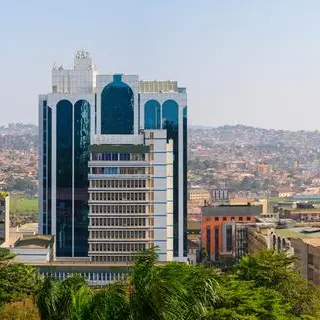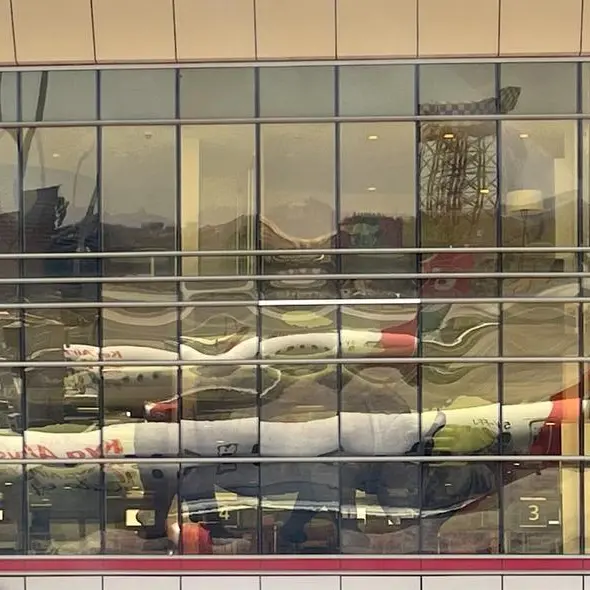PHOTO
US currency dollars, Image used for illustrative purpose. Getty Images
The East African Crude Oil Pipeline (Eacop) shareholders have injected more than $500 million into the project following recent cash calls after delays in debt financing nearly threatened to slow the pace of early construction work.
The 1443km pipeline will run from the Albertine region in western Uganda to the Tanzanian port of Tanga.
The cash injection increases the shareholder financing ratio to 52 percent – surpassing the 40 percent equity funding initially envisaged by project developers TotalEnergies, China National Offshore Oil Corporation (Cnooc), and the governments of Uganda and Tanzania.“We have not reached financial close. As shareholders, we have increased our equity, but we still need debt financing,” Uganda’s Energy Minister Ruth Nankabirwa said on Thursday.
She was speaking during a media briefing on the sidelines of the ninth Uganda International Oil and Gas Summit (UIOGS) in Kampala, running from November 26-27 2024.
To date, the $5 billion project has raised $2.6 billion in equity funding alone, in addition to the only loans raised from external lenders of $200 million from the Afriexim Bank, and $100 million from the Islamic Development Bank.
The remaining debt is expected to come from China, with financiers Exim Bank and Sinosure currently in discussions with Eacop shareholders to support the project.
TotalEnergies, the lead investor in Uganda’s oil projects, holds a 62 percent stake in Eacop and has injected an additional $400 million in equity.
Uganda and Tanzania, each with a 15 percent stake, have increased their contributions by $45 million each.
Their involvement in the development of the pipeline is through the state-owned Uganda National Oil Corporation (Unoc) and Tanzania Petroleum Development Corporation, which oversee their governments’ commercial interests in the oil and gas projects.
Cnooc Uganda, which has an eight percent stake in Eacop, has also invested about half of what Uganda and Tanzania have raised, according to Hu Weijie, the company’s vice president.
In June of this year, Ms Nankabirwa led a delegation to Beijing to finalise pitches for Chinese loans from key lenders China Exim Bank and Sinosure. A decision on debt financing is expected before the end of the year.
Despite several delays in reaching financial close on the debt financing since the route decision was taken in 2016, the developers are aiming to expedite construction to match the timelines of the upstream Tilenga and Kingfisher fields, which are on track to produce oil next year.
Construction of the central processing facilities is more than 80 percent complete.“We did not plan for storage of crude,” Ms Nankabirwa said, referring to the potential dilemma if the upstream drilling activity races far ahead before the export pipeline is ready.
The Cnooc-run Kingfisher and the larger Tilenga oilfield, operated by French giant TotalEnergies, have intensified drilling, with 90 oil wells drilled so far, out of more than 400, said Ernest Rubondo, executive director of the Petroleum Authority of Uganda.
In September, Uganda received the first batch of coated line pipes for the pipeline, which was delivered to the main camp and pipe yard in Kyotera District, signalling the project developers’ intent to fast-track the laying and construction of the cross-border pipeline in both Uganda and Tanzania.
The incoming managing director of Eacop Ltd, Guillaume Dulout, said the project had so far received a total of 800km of line pipes from Chinese supplier and construction contractor China Petroleum Pipeline Engineering, but only a third of the route had been laid across the two countries.
Delays in funding Eacop, coupled with slow progress on the planned 60,000 barrels per day refinery, have further complicated the synchronisation of Uganda's oil projects, and Ms Nankabirwa admits that the 2025 first oil target will be missed.
With the construction of above-ground installations underway, including pumping stations, main camps and production yards in Uganda and Tanzania, the project developers aim to lay 100km of pipeline per month to meet their delivery timeline.
The $5 billion mega infrastructure project is designed to transport 230,000 barrels of oil per day at peak production, from western Uganda to the Chongoleani peninsula near the port of Tanga in Tanzania.
The project was initially planned to be financed on a 60-40 percent debt-equity split. However, after pressure from human rights groups and environmentalists, European banks and other potential financiers pulled out, forcing shareholders to increase their contributions to cover a larger proportion of the project's costs.
© Copyright 2022 Nation Media Group. All Rights Reserved. Provided by SyndiGate Media Inc. (Syndigate.info).





















